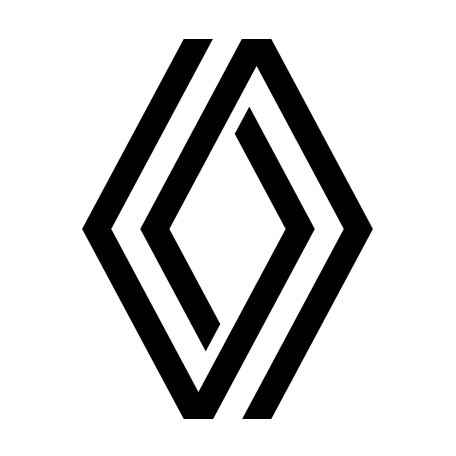

Refreshed styling for Dacia’s core models – the Sandero, Sandero Stepway, Logan MCV and, in certain European markets, Logan. These models are now more modern and more attractive than ever
The new entry-level three-cylinder petrol engine – the 1.0-litre SCe 75 – is modern, more economical and Euro6 compliant
Dacia sales have continued to climb ever since the brand’s relaunch in 2004
At the end of August 2016 Dacia set a new sales record with more than 391,000 units sold worldwide YTD – an increase of 7.3 per cent compared to 2015
New Dacia models to go on sale in the UK at the start of 2017
Dacia has refreshed the design of its three signature models: the Sandero, Sandero Stepway, Logan MCV and, in certain European markets, Logan. A wide range of engine options (including the new SCe 75) is also available, along with a choice of transmissions and new affordable equipment options. Meanwhile, the Duster can be equipped for the first time with EDC (Efficient Dual Clutch) automatic transmission for an even more enjoyable drive.
New Sandero, Sandero Stepway and Logan MCV…always more
Dacia has refreshed the exterior and interior design of its three signature models, namely the Logan MCV, the Sandero and the Sandero Stepway. These enhancements embody Dacia‘s new, more assertive and even more modern lighting signature.
Exterior styling: even more modern and attractive
Dacia design is on the move. The models display a new lighting signature front and rear[1] for an even more dynamic, contemporary look. The design of the front and rear lights has been revised. The front LED daytime running lights feature a pattern of three stacked rectangles. The rear lighting signature is based on three illuminated squares.
The new Logan MCV and the new Sandero all share a more modern front bumper design, along with chrome detailing for the air intake grille. Meanwhile, the design of the front and rear bumpers[2] has been reworked to emphasise the models’ muscular stance.
These design enhancements are shown to particularly powerful effect on the new Sandero Stepway. This model has a new frontal identity which picks up on the design cues of the Duster. The grille elegantly combines the black tones of the bumper with chrome detailing which brings an even more dynamic touch to the vehicle’s nose. At the rear, a chromed exhaust tailpipe highlights the car’s tough, ready-for-action character.
Last but not least, the brand’s range of wheel trims and alloy wheels has been updated (depending on individual markets and models).
Status-enhancing interior
The cabins of the new models have been upgraded, too, including a more elegant and more contemporary satin-effect chrome finish for the air vent surrounds, trim strip and centre console fascia. The new four-spoke steering wheel has the horn push in the centre and proudly displays the Dacia logo. The steering wheel on high-end versions stands out through its exclusive Soft Feel finish that is both durable and pleasant to the touch.
On the new Sandero Stepway, the interior door releases are now chrome plated. Models across the range come with new upholstery fabrics with textures and patterns that convey both a fresher feel and an impression of comfort. The upholstery of new Sandero Stepway features a 3D weave for a greater sensation of depth, enhanced by top-stitching.
Even more extensively equipped but still at an affordable price
The new Logan MCV, new Sandero and new Sandero Stepway feature new driver aids designed to make driving even easier and more practical. A reversing camera (depending on version) and Hill Start Assist simplify manoeuvring and, in response to customer feedback, Dacia has relocated the front and rear electric window switches to the door panels. For the driver, the window switch has a handy one-touch function, while comfort is further enhanced by a retractable armrest incorporated into the driver’s seat (depending on version).
The cabin is as spacious as ever and even more practical thanks numerous stowage spaces, including a front mobile phone cubby hole and a tray on the side of the console to accommodate small items. The new centre console design incorporates a bottle holder at the rear. Also new is a 12-volt power socket which allows rear passengers to charge mobile devices.
A new engine, the SCe 75
Seven different powertrains are available from launch, including the new, Euro 6-compliant SCe 75. This 75-horsepower, three-cylinder, 1.0-litre unit has benefited from Renault’s expertise. The result is a CO2 emissions and fuel consumption saving of almost 10 per cent[3].
DACIA SALES CONTINUE TO CLIMB
Since its revival in 2004, Dacia has sold more than four million vehicles, mainly in Europe and the Mediterranean region. Dacia set a new sales record at the end of August 2016, selling more than 391,000 units and reporting a 7.3 per cent increase in sales. Its market share increases in Europe +0.1 point (2.5%), in Eurasia + 0.1 point (7.9%) and + 1.7 point in Maghreb (17.8%). Dacia remains a hugely popular brand among its customers.
Record Sales
At end-August 2016, Dacia had sold 391,098 units globally, a gain of 7.3 per cent. No fewer than 27 of the 44 markets where the Dacia brand is sold set markets share or sales records as of end-August 2016.
In Europe, Dacia’s sales totalled 288,477 units – a new record and an increase of 12.5 per cent. The Sandero is Europe’s third best-B-segment selling vehicle to retail customers[4]. The Dacia Duster is the second best-selling C-segment vehicle to retail customers in Europe.
In France, Dacia reported a 12.3 per cent rise in sales to 77,671 vehicles and set a new record for passenger car sales. The brand beat its existing record for passenger car sales, with more than 76,000 registrations. Sales of the Sandero climbed by 26.7 per cent and the model moved up three spots in the French rankings. The Sandero was the second top-selling car to retail customers.
In other European countries, Dacia saw its sales increase by 12.6 per cent to 210,806 units. In Italy, the brand posted record sales of 38,316 units, up 18.2 per cent. New records were also set in Spain (39,192 units) and Poland (13,381 units), where Dacia reported its highest-ever market share at 4.3 per cent. Dacia also posted record market share in the Czech Republic at 4.8 per cent.
In Morocco, Dacia’s sales grew by 21.9 per cent to 28,327 units. The brand was still in the lead in the passenger car and LCV market combined, scoring a 26.4 per cent market share.
In Turkey, with 26,984 sales, Dacia still beat its previous records for market share (up 4.7 per cent).
Active in 44 countries, Dacia aims to build on recent new model releases in its mainstream range to boost its popularity.
For more than 10 years, the Dacia brand has stood out as a major player in the car market thanks to its straightforward policy of manufacturing attractive models that provide real value for money for the equipment they feature.
Dacia customers keep close contact with the brand
Dacia customers show their commitment to the brand on Facebook, which has a community of more than three million Dacia fans. Dacia Picnics are now a tradition and each year attract several thousand people in a number of different countries.
Customer loyalty has driven the brand’s commercial success. On June 26, more than 11,000 customers attended Dacia’s eighth annual picnic in France. Similar events held in Denmark and Germany attracted 3,000 people and 5,500 people, respectively. In the UK, the Dacia Day is into its fourth year where everyone enjoys a friendly atmosphere and a fun-packed day.
About Dacia
Dacia has a long history associated with Renault, the French brand first working with Dacia plants in Romania in the 1960s, before acquiring them fully in 1999. The brand concept is simple: to shake up preconceived ideas. Dacia produces spacious, robust, high-quality vehicles of original design that are affordable for everybody.
Dacia vehicles offer exceptional value for money. Reliable and resistant, they carry a three-year warranty and embody the best of Renault expertise. Since 2004, the range has been expanding constantly and buyers have a wide array of vehicles to choose from, ranging from Dacia Duster, a sporty all-terrain vehicle, to light commercial vehicles or family vehicles such as Dacia Logan MCV.
Dacia has proven very popular with owners and critics alike in the UK:
What Car? ‘Best Small Car under £12,000’ – Sandero (2016, 2015, 2014 and 2013)
Auto Express Driver Power 2016 – Dacia in top 5 of 32 brands (2016, 2015, 2014)
Auto Express Driver Power Dealer Satisfaction 2016 – Dacia 2nd overall in the industry for service experience – ahead of all premium and luxury brands.
Which? Car Guide 2016 – Dacia ranked 4th out of 34 brands for customer satisfaction
The brand continues to enjoy great success with over 4 million Dacias sold in Europe since the brand’s revival in 2004. Since launching in the UK in January 2013, over 78,000 Dacia models have been sold.



